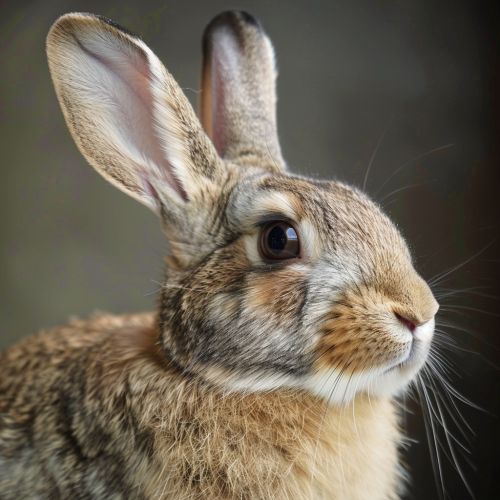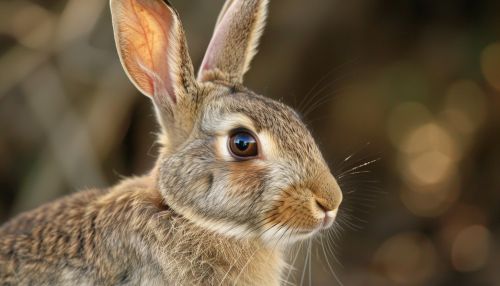Lagomorpha
Taxonomy and Evolution
The order Lagomorpha is a group of mammals that includes rabbits, hares, and pikas. The name "Lagomorpha" comes from the Ancient Greek lagos (λαγώς), meaning "hare", and morphē (μορφή), meaning "form". The order is part of the grandorder Glires, which also includes rodents.


Lagomorphs evolved from early mammal ancestors known as "condylarths" and have been distinct from their closest relatives, the rodents, for about 60 million years. The earliest known lagomorph fossil, "Desmatolagus", dates back to the Eocene epoch.
Characteristics
Lagomorphs are small to medium-sized mammals. The smallest species is the American pika, which typically weighs less than a pound, while the largest is the European hare, weighing in at about 10 pounds. They have four incisors in the upper jaw (unlike rodents, which have two) and their hind limbs are generally longer than their forelimbs. They also have a unique skeletal structure, which sets them apart from other mammals.
Diet and Behavior
Lagomorphs are herbivores, and their diet primarily consists of grasses, leaves, and bark. Some species, like the pika, also eat small amounts of insects. They have a unique digestive system that allows them to extract maximum nutrition from their food through a process called cecotrophy.
In terms of behavior, lagomorphs are known for their high reproductive rate, and many species breed multiple times a year. They are also known for their ability to run at high speeds and their tendency to freeze when threatened.
Classification
The order Lagomorph includes two families: Leporidae (rabbits and hares) and Ochotonidae (pikas). The family Leporidae is further divided into two genera: Lepus (hares) and Oryctolagus (rabbits). The family Ochotonidae includes just one genus, Ochotona, with around 30 species of pikas.
Conservation
Several species of lagomorphs are considered endangered or vulnerable due to habitat loss, climate change, and hunting. Conservation efforts for these species include habitat restoration, captive breeding programs, and legal protection from hunting.
